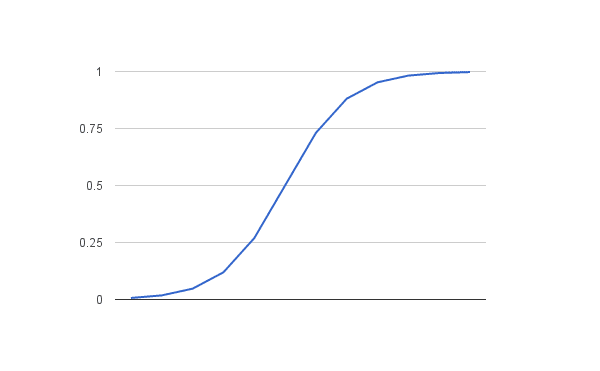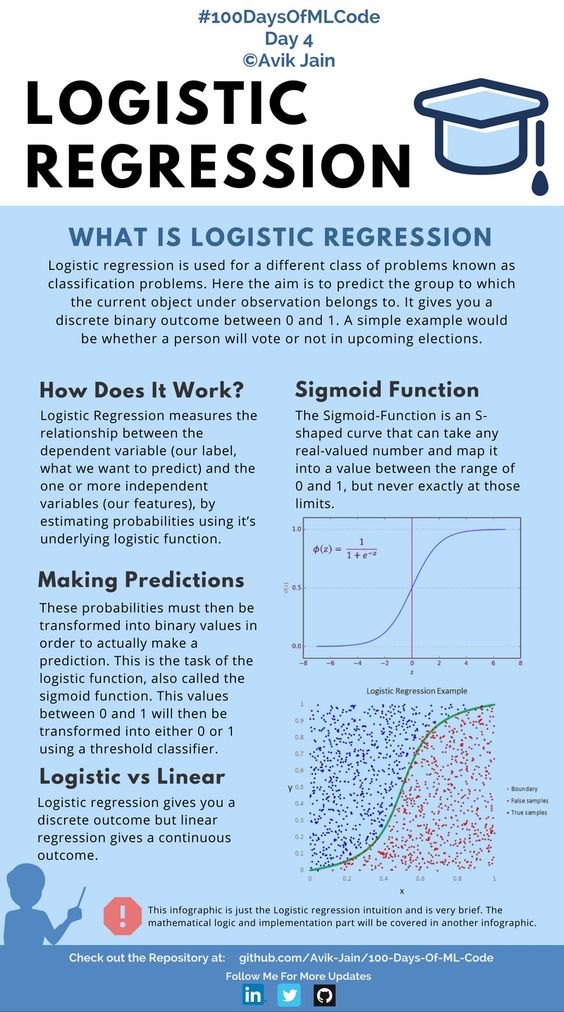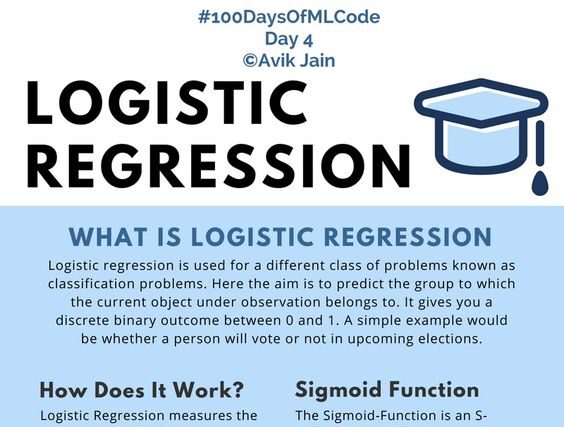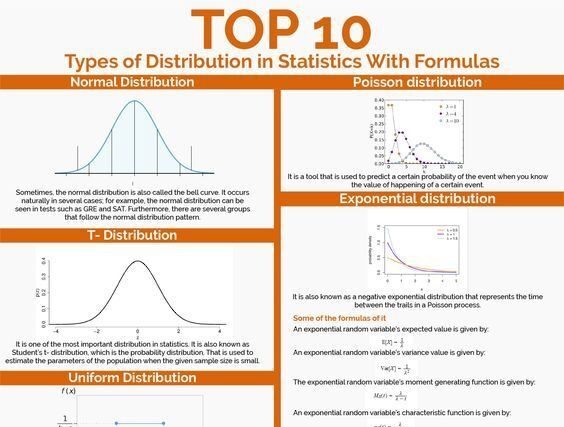What is Logistic Regression?
It is a data analysis technique that uses mathematics to find the relationships between two data factors. It then uses this relationship to predict the value of one of those factors based on the other. The prediction usually has a finite number of outcomes, like yes or no.
For example, let’s say you want to guess if your website visitor will click the checkout button in their shopping cart or not. It analysis looks at past visitor behavior, such as time spent on the website and the number of items in the cart. It determines that, in the past, if visitors spent more than five minutes on the site and added more than three items to the cart, they clicked the checkout button. Using this information, the logistic regression function can then predict the behavior of a new website visitor.
Logistic Function or Sigmoid Function
Logistic regression is named for the function used at the core of this method, the logistic function. The logistic function, also called the sigmoid function was developed by statisticians. It’s an S-shaped curve that can take any real number and map it into a value between 0 and 1, but never exactly at those limits.
1 / (1 + e^-value)
Where e is the base of the natural logarithms and value is the actual numerical value that you want to transform.

- Logistic function is a mathematical function used to map the predicted values to probabilities.
- The value of the logistic regression must be between 0 and 1, which cannot go beyond this limit.
- In this algorithm, we use the concept of the threshold value, which defines the probability of either 0 or 1. Such as values above the threshold value tends to 1, and a value below the threshold values tends to 0.
Types of Logistic Regression
There are three types
- Binary
- There can be only two possible types of the dependent variables, such as 0 or 1.
- Multinomial
- There can be three or more possible unordered types of the dependent variable.
- Ordinal
- There can be three or more possible ordered types of dependent variables, such as “low”, “Medium” “High”.
Binary Logistic Regression
Binary Logistic Regression an either/or solution. There are just two possible outcome answers. This concept is typically represented as 0 or 1 in coding. Examples include:
- Assessing cancer risk (outcomes are high or low).
- Will a team win tomorrow’s game (outcomes are yes or no).
Multinomial Logistic Regression
It is a model where there are multiple classes that an item can be classified. There is a set of three or more predefined classes set up prior to running the model. Examples include:
- Texts into what language they come from.
- Predicting whether a student will go to college, trade school or into the workforce.
Ordinal Logistic Regression
It is also a model where there are multiple classes that an item can be classified. In this case an ordering of classes is required. Classes do not need to be proportionate, and distance between each class can vary. Examples include:
- Ranking restaurants on a scale of 0 to 3 stars.
- Predicting the podium results of an Olympic event.
Importance of logistic regression
It is an important technique in the field of artificial intelligence and machine learning (ML). ML models are software programs that you can train to perform complex data processing tasks without human intervention. ML models built using logistic regression help organizations gain actionable insights from their business data. They can use these insights for predictive analysis to reduce operational costs, increase efficiency, and scale faster. For example, businesses can uncover patterns that improve employee retention or lead to more profitable product design.
Benefits of using Logistic Regression
Simplicity
Logistic regression models are mathematically less complex than other ML methods.
Speed
Its models can process large volumes of data at high speed because they require less computational capacity, such as memory and processing power.
Flexibility
You can use it to find answers to questions that have two or more finite outcomes. You can also use it to preprocess data. For example, you can sort data with a large range of values, such as bank transactions, into a smaller, finite range of values by using logistic regression. You can then process this smaller data set by using other ML techniques for more accurate analysis.
Visibility
It analysis gives developers greater visibility into internal software processes than do other data analysis techniques. Troubleshooting and error correction are also easier because the calculations are less complex.
Assumptions
- It is a classification model, unlike linear regression.
- The independent variable should not have multi-collinearity.
- Remove highly correlated inputs.
- It will not give significant weight to outliers
- during its calculations.
- Does not favor sparse (consisting of a lot of zero values) data.

Recommended for you:
Simple and Multiple Linear Regression




MOST COMMENTED
Tutorial
Important Methods in Matplotlib
Machine Learning
Bias and Variance Tradeoff Machine Learning
Tutorial
Multiclass and Multilabel Classification
Machine Learning
Reinforcement Learning in Machine Learning
Deep Learning
Alexnet Architecture Code
Machine Learning
Machine Learning Models Explained